

Matsya by Philip Baldaeus, from 'Nauwkeurige
beschrijving Malabar en Choromandel, derz. aangrenzend rijken,
en het machtige eiland Ceylon', Amsterdam, 1672; also: *Vamana*; *Parashurama*; *the Buddha*; *Kalki*
Source: ebay, Aug. 2014
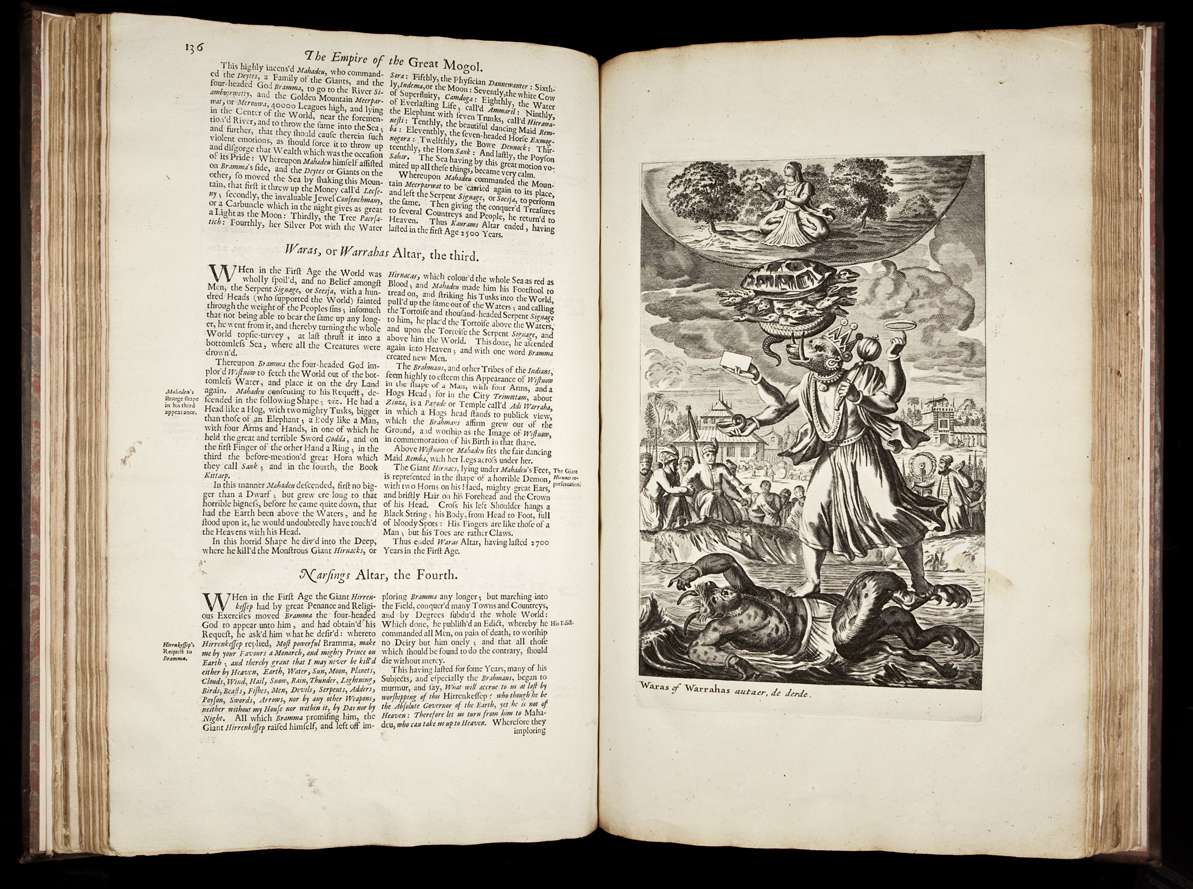
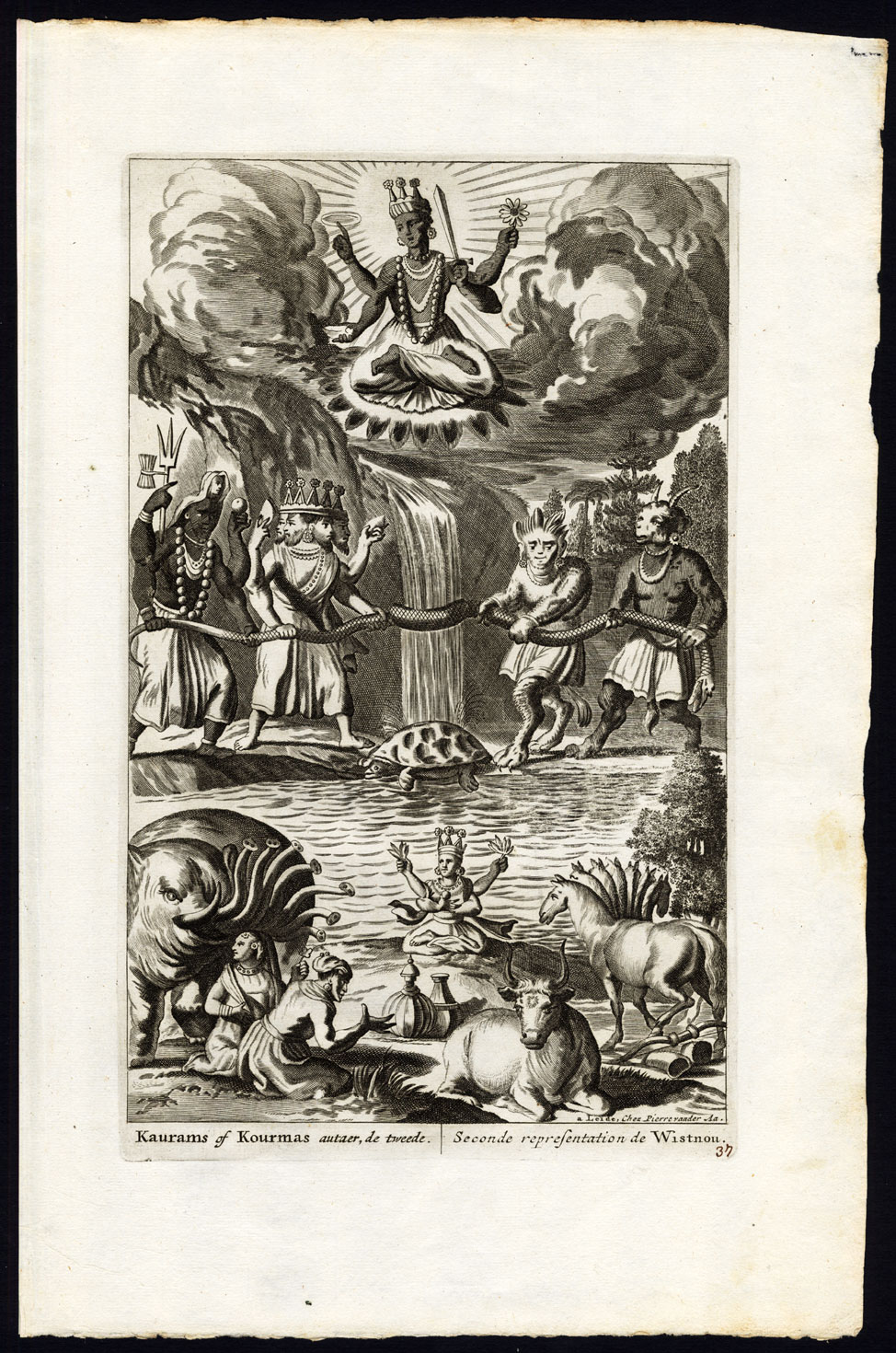
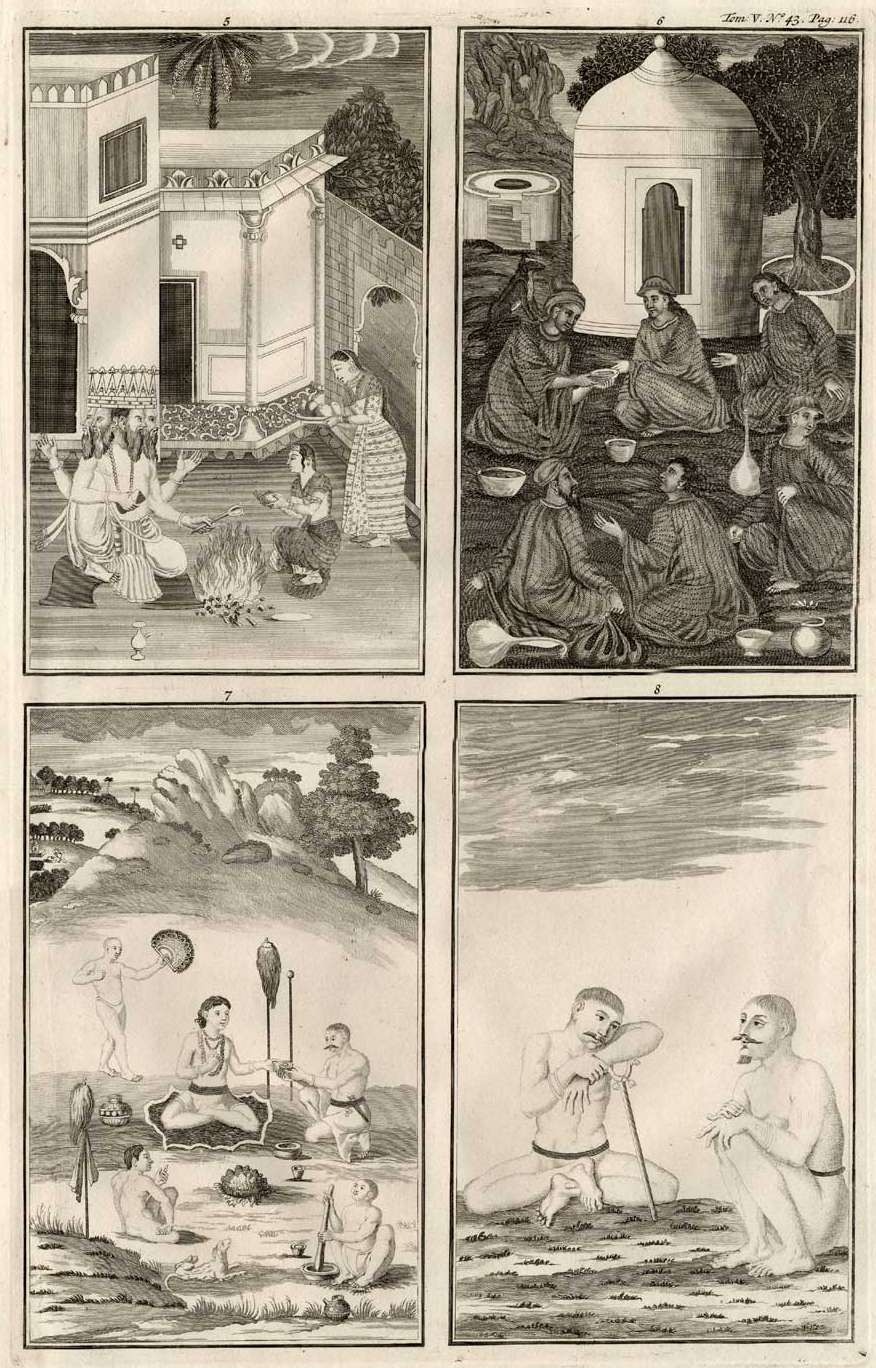
![]()
"The Bamun Avatar, representing the magnificent Bali Orbelus giving away the arrogated Empire of the World, to the disguised Vishnu," a copper engraving, 1790's, probably based on Valentijn 1726
Source: ebay, Dec. 2005
More copper engravings from the same series, apparently from an English translation of Valentijn's Dutch work "Zaaken van den Godsdienst," 1726:
*The Matsya avatar, or first
incarnation of Veeshnu in the form of a fish to recover
sacred books lost during the deluge*
*The Vara avatar or second
incarnation of Veeshnu in the form of a boar to support upon
his tusks the Earth, immersed in the waters of the deluge*
*The Courma avatar, or third
incarnation of Veeshnu in the form of a tortoise to sustain
the Earth convulsed by the assaults of demons during the
deluge*
*The sixth avatar or Veeshnu
incarnate in Parasa Rama, the exterminator of the Khettri
tribe*
*The seventh avatar or Veeshnu
incarnate in Ramachandra combating with the ten-headed
Ravan, the gigantic tyrant of Ceylone*
*Buddha or the ninth avatar,
incarnate for the purpose of abolishing sanguinary
sacrifices*
*The Calci or 10th avatar, an
evident allusion to the destroying angel and white horse of
the Apocalypse*
*Creeshna trampling on the
head of the crushed serpent*
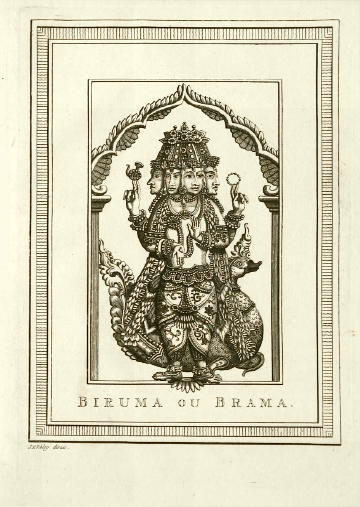 |
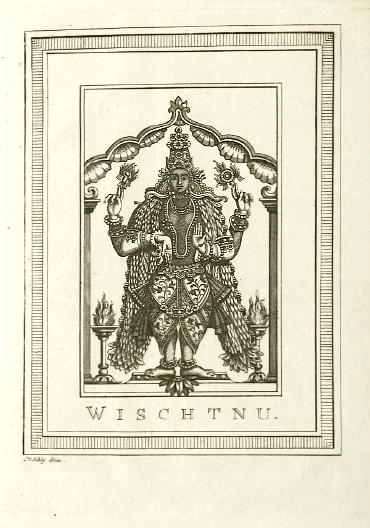 |
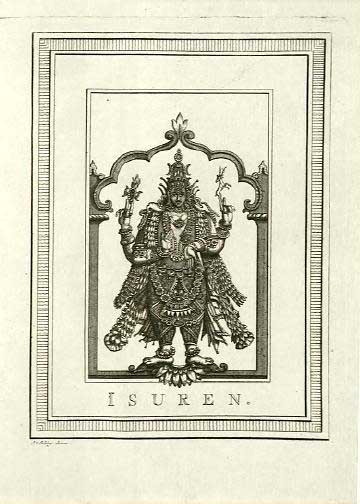 |
Biruma, Wischtnu, and Isuren (Ishvara), from *PREVOST*, 1757
Source: ebay, Mar. 2006
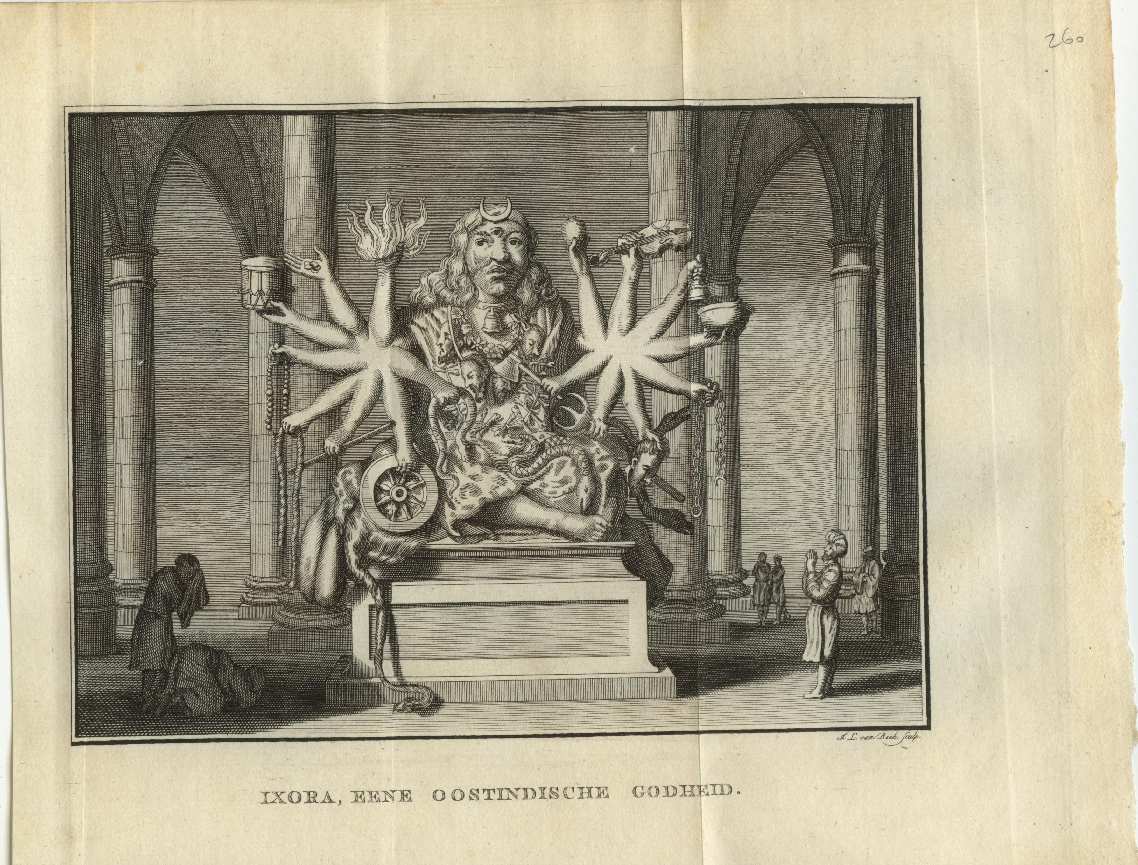
"Ixora [=Ishvara], an East Indian god," from: 'Geschiedenis van alle wereldgodsdiensten', by William Hurd (Amsterdam, Martinus de Bruyn, 1781); also: *"Quenevadi [=Ganapati], son of Ixora"*
Source: ebay, Feb. 2007

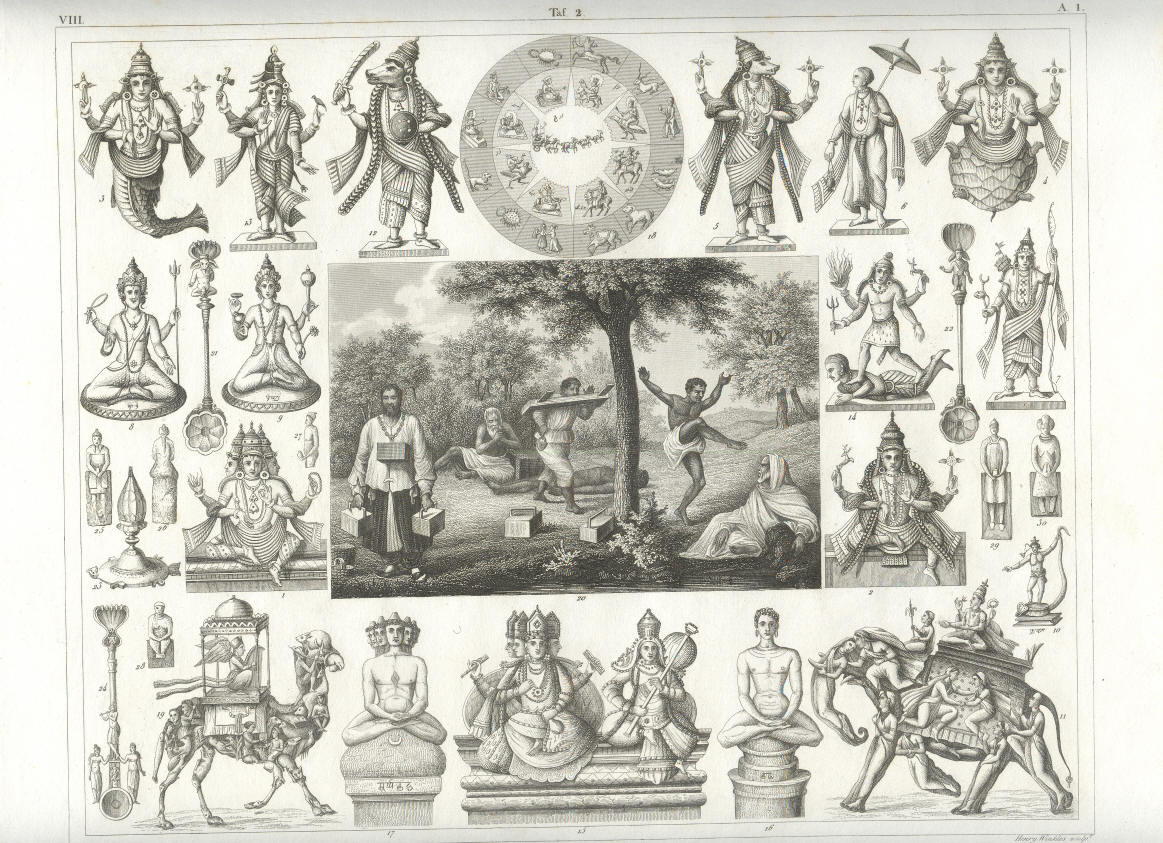
A mythological overview, from Johann Georg Heck's "The Iconographic Encyclopedia" (New York: R. Garrigue, 1851): "Figure 1. The Trimurti 2. Vishnu and Siva 3. Vishnu as a fish 4. Vishnu as a tortoise 5. Vishnu as a bear 6. Vishnu as a dwarf 7. Vishnu as Parasu Rama 8. Siva 9. Vishnu 10. Vishnu as Krishna 11. The nymphs of the Milk Sea 12. Vishnu as Kaninki or Katki 13. Siva as Hermaphrodite 14. Siva on the giant Muyelagin 15. Brahma and Saravadi 16. Buddha 17. Buddha-Surya 18. The Hindoo solar system 19. Mythic camel 21-24. Hindoo sacrificial utensils 25-30. Mongolian idols CENTER: 20. Hindoo penitents"
Source: ebay, July 2006
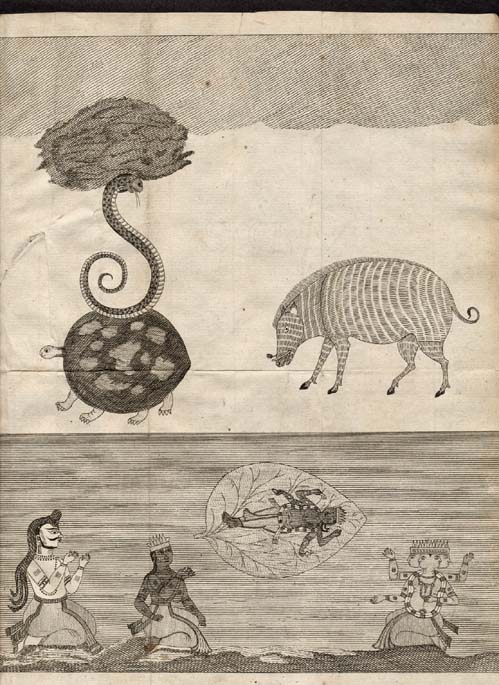
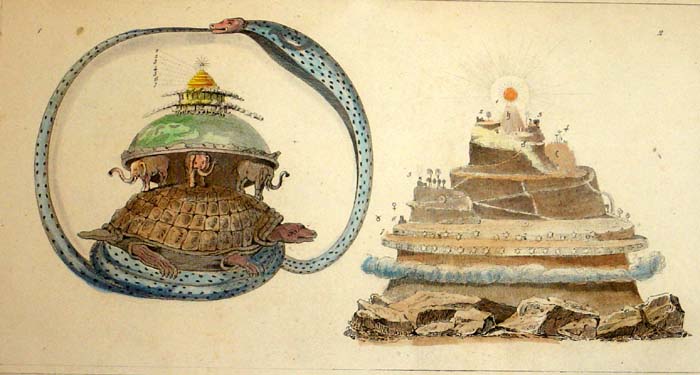
An attempt to depict the cosmology of the Puranas, and Mount Meru, provenance and exact date unknown; a steel engraving, 1850's, with modern hand coloring
Source: ebay, Dec. 2006
== Indian Routes index == Indian Routes sitemap == Glossary == FWP's main page ==